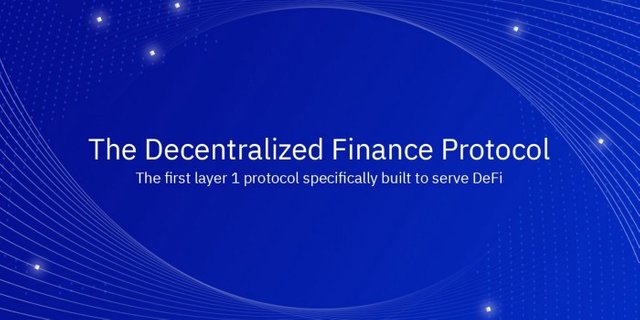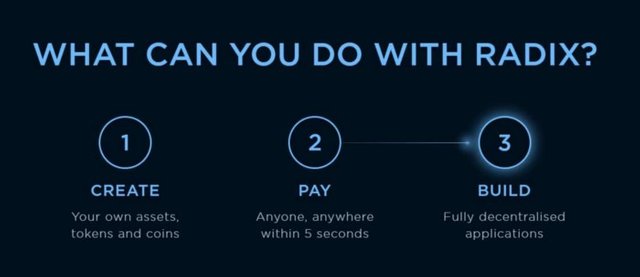A little about DEFI

DeFi is the future of finance. The current financial system is creating friction that costs the world $ 71 billion. US per year and supply products that are often rigid and inflexible. Decentralized Finance (DeFi) offers an alternative, adaptable framework in which traditional and innovative new financial applications can be quickly developed and easily accessible to everyone.
Radix is the future of DeFi
Currently, decentralized finance applications are built on protocols that were not designed to meet the needs and requirements of DeFi services.
Radix leverages our significant technological innovation to become the first Layer 1 protocol specifically designed to serve the fast-growing DeFi industry.
Radix focuses on three drivers of DeFi growth
Access
Despite the rapid growth of crypto security, it is surprisingly difficult and expensive to get money into and out of the current DeFi ecosystem. Our user-centered, vertically integrated approach aims to make on / off as simple, safe and friction-free as possible.
Liquidity The
lifeblood of the global economy, however, currently most of the tokens and assets in the world have their limited liquidity, fragmented across platforms, and they do not work well together.
The Radix platform provides native functionality for projects, developers, communities and market makers to create and access liquidity pools via API calls.
The choice of
public ledger network effects is based on both the number of users and the number of connections between assets and applications on the platform. By standardizing and simplifying the way financial assets and products are represented in Radix, these asset “code blocks” can be easily scaled up.

What does Radix offer?
Most consensus protocols today agree on the order of all commands (e.g. transactions
or events) on the same timeline, stored in a consistent chronological order on the blockchain or similar. This is also known as the "global order". Global ordering is typically required for any DLT offering traditional, mandatory, "Turing complete" smart contract virtual machines, where the correct smart contract execution state can depend unpredictably for any other state in the system.
Coordinating the consensus process for a large number and team usually entails high communication overheads and therefore limits the achievable bandwidth.
State separation is a technique that can be used to parallelize a negotiated agreement to increase throughput. However, such parallelization is only possible if the sharding method used allows instructions that are unrelated to be separated and thus can be safely processed in parallel.
Sharding is thus the exact opposite of the uniform schedule implied by the global ordering requirement. Cerberus addresses this shortcoming by using multiple concurrent timelines that only provide order for related events. To achieve this, Cerberus uses a combined approach to consensus and application layers. It does not require global ordering even for smart contract features. This opens up the possibility of safe concurrency consensus through state sharing, which significantly reduces bandwidth constraints.

Applications
Eliminating the need for global ordering at the application level requires an alternative to the typical contract 'design method. We believe that a different approach is not only possible, but also has benefits (described outside of this article) that go beyond removing the burden of global ordering from consensus. This alternative approach breaks the useful functionality of the DLT application into independent functional components.
An example of an application layer that works in this way is the Radix Engine, an application layer for Radix. The Radix Engine allows a developer to define transaction functionality in an "asset-oriented" way. useful elements of day-to-day transactions , such as identity, money, products or property, are modeled not within the “Unlimited” smart contract code, but as functional, separate components that can be updated independently. The Radix Engine can transform these components into separate state machines, which it then easily translates into a shard language that Cerberus understands.
Therefore, the Radix Engine is capable of expressing a transaction as a Cerberus command consisting of a set of state machine updates with explicit dependencies. Cerberus is designed to take advantage of the partial ordering made possible by this type of application layer providing massively concurrent consensus.
▶ ️ Website: https://www.radixdlt.com
▶ ️ Twitter: https://twitter.com/RadixDLT
▶ ️ Telegram: https://t.me/radix_dlt
▶ ️ Facebook: https://www.facebook.com/RadixDLT
▶ ️ Reddit: https://www.reddit.com/r/Radix
▶ ️ Medium: https://medium.com/@radixdlt
✅ BTT-username: Spartacus1971
✅ BTT-profile: https://bitcointalk.org/index.php?action=profile;u=2587769
✅ My eth-address: 0xb2c62391cce67c5efc1b17d442ebd24c90f6a47c
#RADIXDLT #RADIX #XRD #DEFI